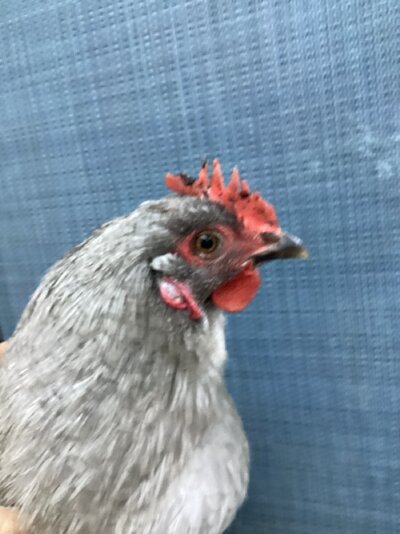- Thread starter
- #21
Here are some pictures. I noticed that they are on both of my Cochin roosters and two of my lavender Orpington. I could only get one Orpington to cooperate, so the other pictures are not too good.Black spots are usually from being pecked, confirmed by a little part missing. I guess I'd try putting that one with the silkies? If you can get a picture, that would help confirm it's this, and not pox.
Can you maybe narrow this down to who are the bullies? Maybe it's just a couple of mean ones that need to be set apart.









 Glad you joined.
Glad you joined.